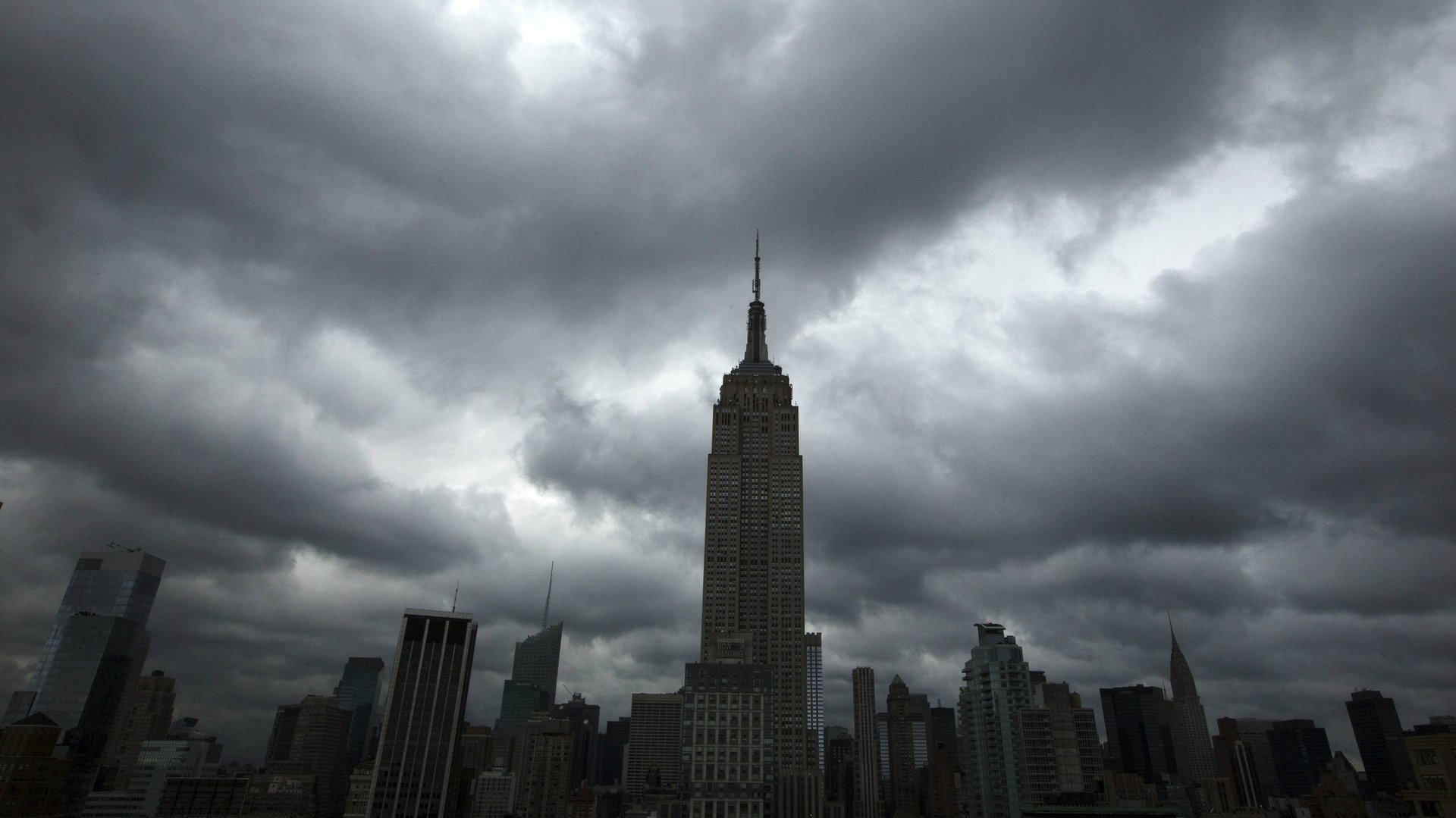Hurricane watch: Jose could threaten the East Coast next week
Ready for round three, America?


Ready for round three, America?
Harvey and Irma may be winding down, but another hurricane brewing in the Atlantic has the potential to impact the East Coast next week.
As of 5pm eastern time on Sept. 11, estimates from the National Hurricane Center pegged Jose as a category 2 hurricane. Barbuda and Antigua, which were devastated by Hurricane Irma last week, fortunately escaped most of the worst of Jose. The storm passed just north of the islands on Saturday, Sept. 9, and is currently about 300 miles northeast of Turks and Caicos, with top sustained winds of 100 mph.
Typically, hurricanes that form in this part of the Atlantic go back out to sea and die out, but Jose’s “odd forecast track” predicts a circuitous path over the next few days. While the storm circulates, a high area of pressure will move around it, and could eventually force it to move west-northwest towards the East Coast, according to the Weather Underground.
Ten days is still a long way off from being able to predict an accurate storm area, but meteorologists warn that the East Coast is likely to at least experience rainfall and strong rip currents from Jose.
The National Hurricane Center’s “cone of uncertainty”—the area in which a storm is predicted to wind up—currently shows Jose staying in the Atlantic basin through Saturday. But the cone of uncertainty isn’t a forecast; it represents an average track error over the past five years. For the 2017 hurricane season, the cone size is about 50 miles for a 24-hour forecast, 90 miles for the three-day, and 243 miles five days out.
Forecasts can change significantly in the days leading up to a storm. Prediction models put Jose anywhere from South Carolina to Newfoundland, or even back out in the ocean. Based on Monday morning’s GFS model forecast, there is a 25% chance the storm will hit the US, 25% chance it will hit Canada, and 50% chance it will spin back out to sea.
The latest predictions show tropical storm-force winds reaching the north-central Bahamas by Friday and moving north over the weekend, with a possible potential landfall in the US along the mid-Atlantic coast on Tuesday.
“Until Jose is farther along on its loop, the models are likely to have large errors,” says Jeff Masters, a meteorologist at Weather Underground. “We should not take too much comfort (or indulge in too much angst) over a particular set of model runs.”
Update Sept. 12: Hurricane Jose has now generated more accumulated cyclone energy—a measure that combines strength and duration—than the first eight Atlantic named storms of 2017 combined.
Track Hurricane Jose
You can use this helpful tool from WNYC to track Jose by selecting the storm name on the top left:
[protected-iframe id=”121d1eef79fc2ad79d67cd64635265c6-39587363-95155909″ info=”https://project.wnyc.org/hurricane-tracker/index.html?year=2017&storm=jose-e-e” width=”100%” height=”760″ frameborder=”0″ scrolling=”no”]